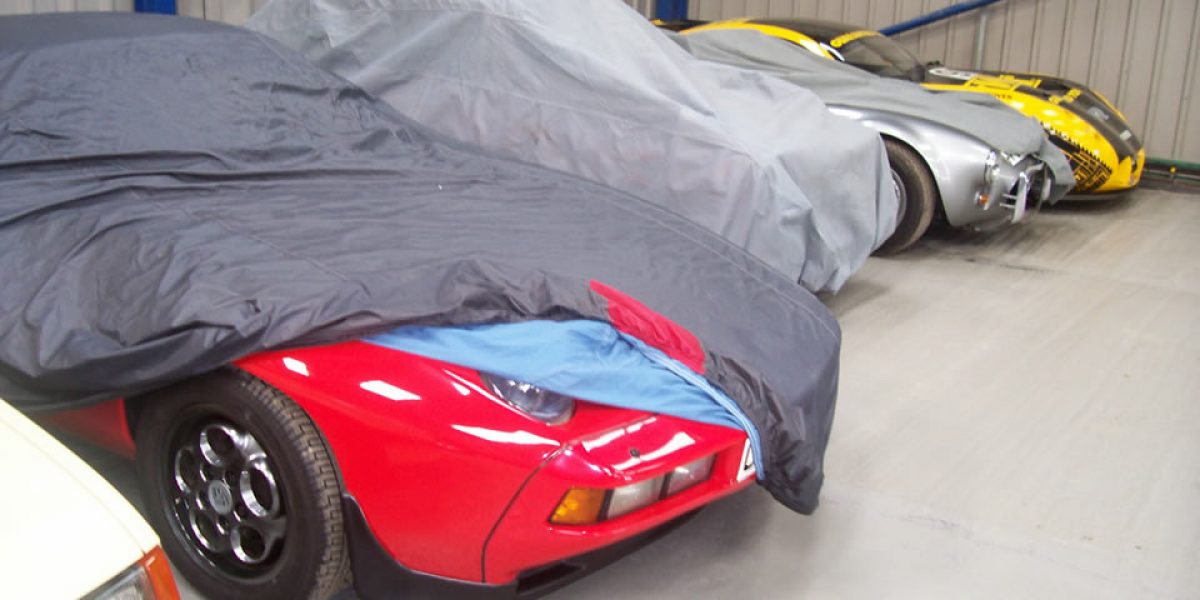Read the Spots
Take a good look under the car. The signs will give you an idea of any problems that you will need to look into. Coolant: check the hoses for rot and cracks. Look at the weep hole on the underside of the water pump – a leak here means the internal seal has perished. Inspect your radiator connections & fittings. Fuel: carefully inspect the tank for leaks at seams or on the bottom surface (rust pin holes). Examine all hose and line connections. Brake Fluid: failed seals in wheel cylinders, callipers or master cylinders. Bad hoses or hose connections. Rear Axle: seals at the pinion or axles. Steering: failed seals or boots. Gearbox: failed seals, fittings or plugs. Anything you find will have to be checked out and corrected as needed.
Critter Damage
Make a thorough inspection of the wiring in the engine compartment and under the car. Insulation seems to appeal to some animals and they can do some serious damage to the wires. Do the same in the cockpit. Any collections of nut shells or stuffing material is a reason to look more carefully.
Exhaust
Remove the plug from the tailpipe(s). Check the hangers and clamps.
Cooling System
If the car was stored for more than a year, drain and refill the system using a name brand antifreeze. Use a mixture of 30% to 50% antifreeze (no more than 50%). Check the hoses for cracks, especially around the clamps. Give all the hoses a good squeeze; any hoses that are suspect should be replaced.
Brake System
If the car has been sitting for 18-24 months (or more) and you use glycol fluid, drain, flush, and refill the brake system. Bleed the brakes. Check operation at all wheels independently. Have an assistant step on the brakes as you rotate each wheel one at a time. The brakes should clamp down and release smoothly. Any problem detected needs to be corrected before the car is driven. Have your assistant apply the hand brake gradually as you rotate each rear wheel one at a time. Again, the brakes should apply increasing friction until the wheel is locked up, and the release should be smooth. Perform any service as needed based on the inspection.
Hydraulic Clutch
Check the fluid in the clutch reservoir. Top us as needed (or change if the car has been stored for more than 18 months). If low, check the hose and slave cylinder for leaks. Have someone depress the clutch pedal while you observe the movement of the slave cylinder pushrod. If the pushrod is not moving, or moving only a little, bleed the clutch system. Fluid inside the dust boot of the slave cylinder indicates a failed seal in the slave, and that needs to be rebuilt or replaced.
Manual Clutch
Check all linkages for free play and free movement. Operate the clutch several times. If there is a provision for lubrication of the various joints, do so.
Oil & Lubrication
No matter where you live, and what you have done to limit it, some moisture will have gotten into the crankcase. With the appropriate oil, the amount of rust and corrosion will be minimal. If the car has been in storage for 2 years or more, change the oil and the filter before you try and start the car. Less than 2 years – plan on changing the oil and filter after the first 30 minute drive. Top up the gearbox. When was the last time you checked the oil in the differential? Might as well do that, too.
Suspension
Check all the suspension joints, pivot points and bushings. Visually inspect the rubber boots and seals for cracks, splits or other deterioration. Touch them – they should be soft and flexible. Hardened or stiff boots will soon crack if they have not already. Lubricated joints, like tie rod ends, will dry out eventually if the boots are torn because the grease will harden, losing its ability to lubricate. Correct any problems that you find. Lubricate the suspension, following the procedure in your workshop manual. Check the shocks for signs of fluid leaks. If they leak, they need to be replaced with new or rebuilt units. You can put that off for the purpose of a test drive by topping up the fluid in the shocks – use only proper shock oil.
Belts
Inspect all belts for cracks and replace as needed; adjust the belt tension.
Wheels & Tires
Air up the tires to the recommended pressure. Visually inspect each tire for cracks in the sidewalls or between the rows of tread. Remount the wheels & tires as necessary. Check the knockoffs or wheel nuts for tightness/torque. If the car is on jack stands, remove them and get the car back on the ground. Make sure the handbrake is set or chock the wheels.
Battery
The battery should be ready to install, fully charged. Check battery voltage – you should see 12-13.8V. Clean the battery posts and the battery cable ends. If you have a vintage-type lead-acid battery, buy a pair of the red and green felt battery terminal rings. Run a bead of silicone sealant around the base of each terminal/post. Press the felt rings down over the posts, down into the silicone. Coat the posts with and the insides of the cable connections with Vaseline (to protect against corrosion) and connect the cables after making sure you have the polarity right. Tighten the cable connections.
Ground Connections
Remove and clean ground cable connections both at the battery and the engine. A good battery and bad ground will not start the car. Wire brush the connections to bare metal. A squirt of WD40 will protect the bare metal for a while. I prefer a dab of copper grease. It will stop corrosion and guarantee a good electrical connection for a year or more.
Lights
Verify that the brake lights, turn signals, head lights and running lights all work properly. If one is not working, check the bulbs, the switch, the power feed and ground leads. Work through one light at a time, one component at a time until you discover the fault and correct it. Turn signals which don’t flash can be caused by a bad flasher, one bulb not grounding properly or a bulb of the incorrect wattage.
Lubricate the Pistons/Rings
If the engine has been sitting for over 90 days it is usually a good idea to get some oil to the rings. Mark the plug wires for future reference then remove the spark plugs and squirt a little oil into each cylinder. On the web, Marvel Mystery Oil is frequently mentioned as the oil of choice for this purpose, although no one explains just why. If you don’t have that, use the same oil you use normally. Let that oil soak for 24 hours. Crank the engine over by hand. Use the starting handle if you have one; otherwise use a suitably sized socket on the crank dog nut with a breaker bar. There may be some initial resistance, but the piston rings should break loose and the engine should spin smoothly after that. Leave the spark plugs out.
Fuel System
If you drained the system, you will need to get some fresh gas. As you add fuel, stop several times and check for leaks in the tank, fuel lines and hoses. If you did not drain the tank, and the fuel in your tank has ethanol in it, check for phase separation before you do anything else. There are products designed just for this purpose (like Water Probe Indicator, Moss 220-362). If water is detected, you can either re-emulsify the water/ethanol/gasoline mixture (using E-Zorb, Moss 220-355), or you can drain the old gasoline and replace it with a couple of gallons of fresh fuel.
Fuel in the Float Bowls & Lines
If the gas in the float bowls is old, remove the float bowls and drain the fuel. If there is old fuel in the lines, disconnect the hose/line at the carb and direct the end into a bucket or old coffee can. Energize the pump or pressurize the tank and push enough fuel to clear the lines and hoses of the old gas.
Getting fuel to the Carbs – Electric Fuel Pump
With a supply of known good fuel in the tank, reconnect the hose to the carb and energize the pump to fill the float bowls. The pump will click quickly and loudly until fuel reaches the pump; it will then slow down and become quieter. As the float chambers fill, the rising float will close the needle valve and shut off the flow of gas. The pump will stop clicking. A pump that continues to click rapidly indicates a problem either with the supply of fuel from the tank or a stuck needle valve in the carb, which will be obvious because there will be gas coming out the overflow pipe on the float chamber. Whatever the issue, it needs to be corrected. Be aware that the gaskets and seals in the carbs will dry out and shrink if left for a long time. When the fuel first reaches the carbs, there will probably be leaks, and you will need to attend to those before you go any further.
OK, Where Are We?
Cars run because three things happen in the right order and in the right quantity: spark, compression, and fuel. We should have spark (once we put the plugs back), meaning enough and at the right time, because the car was in tune when we put it up for storage, and the fully charged battery is in place. Compression should be fine, again because the car was tuned up before we put it up and because we have added oil to the cylinders. We have fresh fuel in the carbs. We are almost ready to start the engine. Most bearing wear occurs in the first 10-20 seconds every time the engine is started. That is because the oil is present in a thin film only, and oil under pressure has not reached the bearings yet. Cold oil is not as good a lubricant either. An engine that has been sitting will take time to get the oil to all the moving parts, and we need to get the oil moving throughout the engine before we fire it up.
Building Oil Pressure
There are several ways to pressurize the oil system. Some of you have a tank that can be filled with oil and pressurized with air, and then plumbed into an oil gallery. These are perfect for loading the system with oil under pressure. If you have such a tank, use it to pressurize the oil system. This will pre-oil all the bearings and moving parts in the engine and minimize the chance of damaging bearings or other internal engine components on start-up. If you don’t have such a tank, you will use the starter to spin the engine over and pressurize the oil system. The last place to get oil is the rocker assembly. If you pull the valve cover, you can easily see when oil reaches this point. If the engine has been sitting for years, or if this is a fresh rebuild, it is strongly suggested that you remove the tappets (carefully noting their original position) from the engine to prevent scuffing the face or foot of the tappets. The load on the engine bearings is minimized by having the plugs out. Turn the key to the start position and hold it there. As the engine turns over, the oil pump will fill the oil galleries and push oil into the main and con-rod bearings. With the engine turning over, the oil pressure gauge should come to life and once you see pressure on the gauge and oil at the rocker assembly, shut it off. Reinstall the plugs and reconnect the plug wires. Reinstall the tappets in their original locations with a dab of ZDDP paste or other cam lube on the foot of each tappet.
Start the Engine
If you are in a garage, push the car so the rear end of the car is outside. Place a fan where it will keep the exhaust gas from blowing back into the garage. Make sure the transmission is in neutral. Engage the emergency brake. Do not “pump the gas” as SU and Zenith carbs do not have accelerator pumps and you won’t accomplish anything. Engage the choke and turn the ignition key to the start position. The engine should crank over and start. If the engine does not start immediately, you need to determine why before you start “fixing” things. Random adjustments will make the situation worse.
Once It Starts…
Let the engine warm up without revving the engine or “blipping the throttle” but don’t leave the choke fully engaged; ease it in as the engine warms up. Take a good look around, checking obvious problems. There may be smoke as the various components heat up. You can verify thermostat function by feeling the top radiator hose. When the thermostat opens, the top hose will warm up quickly. As the systems come up to temperature, keep an eye open for leaks.
Trying Clutch & Gearbox
Step on the clutch and try to engage reverse gear. If you can, lift off the clutch and back the car out into the driveway and stop. Try first gear. With the clutch working normally, you are ready for a short test drive. If you cannot get the car in gear, and the clutch is moving as it should, the clutch friction disc is very likely stuck to the flywheel, the pressure plate or both.
Frozen Clutch
A car left standing will sometimes develop a frozen clutch because the friction disc is trapped under tremendous pressure between the flywheel and pressure plate, and either the metallic particles in the friction disc or the adhesive matrix in the disc fuse to the flywheel or pressure plate. When this happens, the engine crankshaft is fused to the input shaft of the gearbox. Before you try to cure this problem, be absolutely sure the clutch linkage (hydraulic or mechanical) is working as it should. There are two simple things to try first. Start the engine in neutral and let the engine run until it is well and truly warmed up, say 15 minutes. Push the clutch pedal to the floor and blip the throttle several times, sharply raising the engine RPM to 2000 RPM. The heat from the engine and the rapid change in engine speed will often break the friction disc loose. If that does not work, there is another simple procedure that may work.
With the engine off, pump the brakes and hold the pedal down (we don’t want the car to move an inch). Press the clutch pedal to the floor. Shift into 4th gear. Turn the key to the start position and run the starter motor for one second. What this does is use the torque of the starter motor to rotate the flywheel, breaking it loose from the friction disc. As soon as the flywheel breaks free, the engine will crank over normally. If this does not work the first time, try it a couple more times. It that does not do it, stop. There are other more aggressive ways to break the frozen clutch free; call Moss Technical Services.
Test Drive
Assuming all has gone well to this point, you are ready for the first test drive. The purpose of the test drive is to exercise all mechanical, electrical and hydraulic systems so that you can find any remaining problems. Plan out a route about 20 minutes in a circle around your house so that you can walk back if need be. As you drive, listen to the various clues. Is there a miss in the ignition? Does the car pull to one side or the other when braking? How is the steering? Stiff? Loose and “wandering”? How about the shocks? How is the oil pressure? Any problems with the gauges? Back in the garage, make a list of the things you discovered on the drive. Check your fluid levels (except your coolant level; you cannot do this till the engine has fully cooled). A change will indicate a leak you need to find. Top up as needed. After attending to any minor corrections, plan your next drive. Include a run at higher speed on a local highway. After another 30 minutes on the road, back in the garage to take stock of your situation. There will probably be a few things that need attention. Once these are done, you have a car that is ready to hit the road. Because of the time invested, you can set out with a much higher level of confidence than you might otherwise have.
Conclusion
There is no doubt that putting a car into storage and bringing it out is not a trivial undertaking. The longer the car is in storage, the more important it is to consider all the steps presented here. While obviously somewhat generic, the issues covered here apply to all older cars, and this list should be supplemented by additions of your own based on your experience. It should also be clear that the time and effort invested in preparing a care for storage pays off in the time saved in getting the car back on the road. It is also clear that these lists really are the routine maintenance operations that we need to do regularly, and doing them at the beginning or end of a season’s driving makes some sense. It also makes driving the car every month throughout the year when conditions permit much more attractive – the problems that develop with a car in storage are best avoided by simply using the car regularly. That does not eliminate the need for the routine service that has been included in the procedures given here – that still needs to be done using a schedule that suits you.








